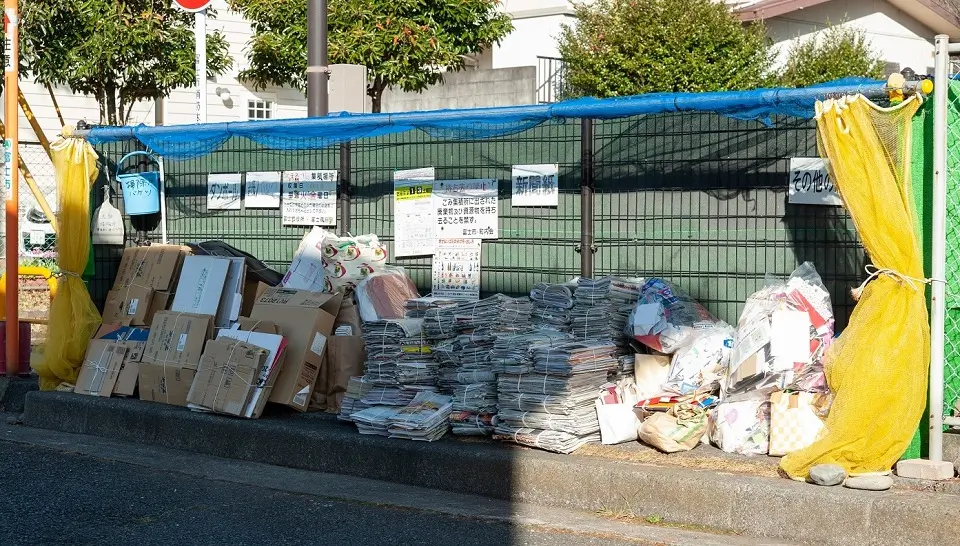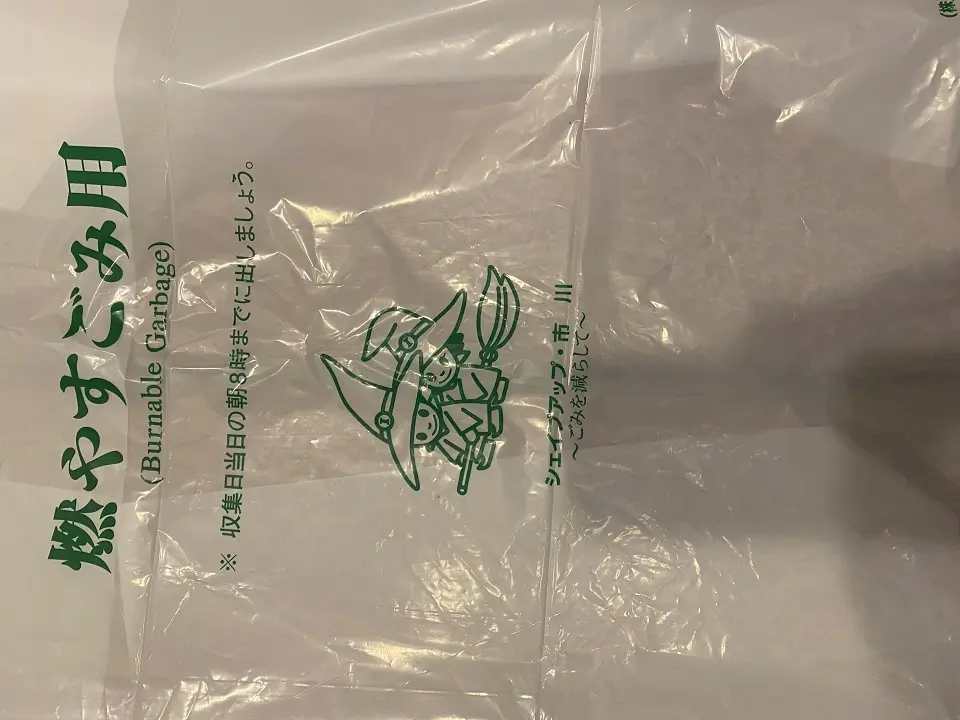Garbage Disposal in Japan – 2023 Guide

When you first move to Japan, many things may be a new experience, both the good and not-so-good things, leaving you scratching your head. And garbage disposal rules in Japan are one of those things.
For foreigners new to Japan, the garbage disposal system may initially be confusing.
How can something so mundane and simple in the West, where you dump everything in a huge bin and leave it outside, be so complex? However, Japan is a community-based society with many rules, and garbage segregation and disposal are no exception. Once in Japan, you need to handle your trash carefully.
Garbage Disposal Rules – Why it is Not so Simple!
Initially, for many foreigners, the garbage disposal rules come as a culture shock. However, please note that even though the trash disposal rules may vary slightly from city to city, and sometimes even ward to ward in the same city. Still, overall, the fundamentals remain the same, and we can summarize these as follows:
- Main categories of garbage
- Sub-categories of recyclable garbage
- Specific days of the week for the disposal of a specific category of garbage
- Designated disposal bags for different categories of garbage
Please note that the main categories of garbage and designated bags for those categories remain the same throughout Japan. However, the sub-categories of recyclable garbage and the designated days for collecting specific categories of trash will vary depending on where you live.
Once you familiarize yourself with the above points and bring the discipline to follow the guidelines, this will become a part of a daily routine without anyone explaining the rules once you settle in Japan!
Main Categories of Garbage
The following table shows the various categories of garbage in Japan and how to segregate them:
| Garbage Category | Items |
|---|---|
| Recyclable Garbage | Newspapers, magazines, cardboard, cartons, pet & glass bottles, metal cans, plastic containers, metal containers & cans, and any other small galls and metal items |
| Oversized Garbage | Furniture & other large household items, bicycles, and large containers, excluding electric and electronic devices like TVs, computers, Air-conditioners, washing machines, motorbikes, tires, large machines, gas cylinders, fire extinguishers, etc. |
| Burnable Garbage | Kitchen garbage, disposable diapers, small bags, leather products, shoes, hand gloves, clothes, small plastic containers & other plastic items, small paper, wooden & cardboard waste, and DVDs and CDs |
| Non-Burnable Garbage | Small electric and electronic products, electric cords, small metal products, and small ceramic & glass items |
Further Explanation of the Main Garbage Categories
Initially, some of the garbage items may create confusion, and the categories might seem to overlap for these items. Considering this, the following clarification of the same should be helpful:
Overlapping of Recyclable and Burnable Items
Paper waste and plastic garbage appear in both recyclable and burnable items categories. However, the difference is in size. For example, bigger items like newspapers, big cardboard, and bigger plastic bottles and plastic items are recyclable waste, while smaller ones fall under the burnable garbage category.
Overlapping of Recyclable and Non-Burnable Items
Like the above classification, the size of the metallic and glass items decides whether the trash is recyclable or non-burnable. Small metallic and glass items fall under non-burnable trash, while bigger trash must be segregated as recyclable.
Sub-Categories of Recyclable Garbage
The following table shows the sub-categories of non-burnable garbage:
| Recyclable Trash Sub-Categories | Items |
|---|---|
| Glass Bottles | All types of glass bottles for food, beverages, medicines, cosmetics, etc. |
| Metal Cans | All types of aluminum and other metallic cans |
| Plastic Bottles | All types of plastic bottles for food items and beverages, etc. |
| Cans and Containers Containing Chemicals | Aerosol spray cans, batteries, gas cartridges, etc. |
Garbage Disposal Based on Type of Houses and Office Buildings
If you live in an independent house, you will have a designated place to leave your garbage. However, in such a case, you must follow a strict weekly schedule and dates for leaving out burnable, non-burnable, and recyclable trash.
The ward office or the municipality designates specific days of the week for various categories of trash. And you must remember this schedule to put the garbage in that place. The garbage collection truck would come daily to pick up the garbage bags you leave there.
However, your life is much easier if you are living in a large apartment building. Such large complexes have a large garbage room for all the residents. Like a warehouse, this garbage collection room has designated areas for different garbage types. Therefore, you do not need to remember the trash collection schedule for various categories. The trash collection truck will come every day and pick up only the scheduled category.
In large apartment buildings, staff usually sort what residents put in trash rooms before final pick-up. Some people volunteer to do this in some residential areas, so it’s best not to cause them an extra burden.
The same is true for office buildings.
Further Rules:
- Please note that to dispose of certain items like magazines and cardboard boxes, you must flatten them and tie them with strings.
- Food & beverage containers, cans, and bottles should be emptied of their contents before you dispose of them.
- For electric items, you need to take out the electric cords and dispose of them separately as non-burnable items.
- In some city wards, the labels must be stripped off the plastic bottles.
Disposal of Oversized Garbage in Japan
For oversized trash, known as “Sodai Gomi,” you must buy a sticker from a convenience store and stick it on items.
These are items over 30 cm in size in any dimension. Such items include chairs, tables, appliances, toys, etc. Please note that electric and electronic appliances such as TVs, air conditioners, refrigerators, washing machines, PCs, etc., are not considered Sodai Gomi.
The price of the sticker depends on the size of the things you wish to get rid of. Therefore, you must call or go online to schedule the pickup date.
Alternatives for Disposing of Large Items, Clothes, Books, or Several Items Simultaneously?
You will find that disposing of furniture, appliances, and unwanted goods all at once will often cost several thousand yen. You can find out about the cost estimate by contacting the ward office or a private service.
However, there are alternative options. For example, pickup trucks slowly drive down the street, announcing over a loudspeaker that they will take away appliances such as televisions, washing machines, and PCs. Even if you do not speak Japanese, you can know about their arrival based on the names of items they announce.
It is best to take advantage of them, as they will sometimes take away your stuff for free and will have these recycled, and they will receive a fee.
You can also sell clothes and shoes at second-hand or recycling stores. However, you must clean them beforehand. Such centers will also accept items that are not in good condition without paying you for those.
Private shops and stores such as BookOff buy used books, magazines, CDs, DVDs, and video games.
In short, some may laugh at first and even scoff at this ordeal as troublesome. But the longer you live in Japan, the importance of community, harmony, and not doing things to burden others, or in Japanese, “meiwaku wo kakenai“, meaning don’t bother people, becomes apparent.
Whether written or unspoken, following the rules is deeply rooted in Japanese culture, equally as being considerate and polite. The best way to assimilate is to adapt. However, once you get used to this unenjoyable task, you can learn to enjoy the other enjoyable aspects of daily life in Japan!
Garbage Bags


In Japan, there are plastic bags of various sizes, up to 45 liters, for burnable and non-burnable garbage. Some of the municipalities also require separate bags for plastic items. You can buy these bags at supermarkets, convenience stores, and many grocery stores.
You need to segregate the garbage and put it in these bags before putting it in the trash collection places. These garbage bags have the category name printed in different colors. These colors vary from municipality to municipality. For example, the bags for burnable garbage can be printed in green or red color, and those for non-burnable garbage bags can be blue or black.
However, please note that in the 23 wards of Tokyo, you do not have to use these designated bags and can simply use any transparent plastic bags.
In some of the municipalities of Japan, people must write their name and type of item to prevent workers from getting hurt if it contains broken glass or sharp objects.
Make sure to follow the rules! Please note that initially, the guidelines for trash disposal can be confusing and tedious, but these are the rules, and when in doubt, you can always ask neighbors or the ward office for advice. Because your trash will often not be picked up if you do not follow the guidelines.
There are also instances when the trash collection people identify the apartment based on the address on some envelopes in the trash bag if the rules are not followed. In such a case, they may put the garbage bag outside your apartment door.


Native Japanese raised in the USA, Yoshinobu Takaoka returned to Japan 20 years back and is a senior finance professional with over 20 years of working experience in Japan. While being Japanese, Yoshinobu has a deep understanding of Japan and Japanese customs, growing up in the U.S. he also has a deep understanding of western culture and what makes foreigners curious about Japan.

